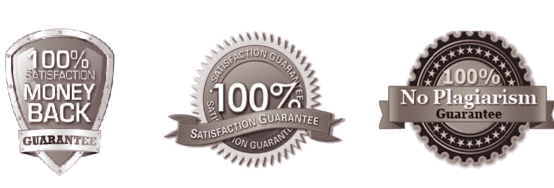TL3127 Creativity & Innovation in Organisations – 2017/18
TL3127 Creativity & Innovation in Organisations – 2017/18
Assignment 3 Critical essay (50% of final grade)
Submission Date 12 noon on 11th January 2018
Assignment Three
Assignment 3 is designed to assess Learning Outcomes 1 & 2.
| 1. | Demonstrate and develop creative thinking and creative problem solving competencies |
| 2. | Critically compare creativity and innovation |
Requirement:
Critically review an example of creativity in the workplace, using appropriate theoretical perspectives to support your analysis. Assess how and why it has made a difference in the industry and consider future possible development.
[2000 words]
1
Marking criteria for Assignment 2:
| Grade % | Knowledge / Understanding | Argument / Evaluation /
Application |
Research /
Evidence/ Interpretation |
Presentation / Structure / Referencing |
| What do you know and understand? | What do you do with this? | How do you evidence/support this? | How do you communicate this? | |
| 86-100 | Demonstrates outstanding knowledge and comprehension of theories on creativity & innovation in the workplace | Shows an outstanding ability to apply knowledge on creativity & innovation to analyse information in order to make reasoned judgements. | Accesses and interprets creativity & innovation in organisations in an authoritative manner | Information professionally presented, structured and communicated; references accurate, reliable and precise |
| 70-85 | Demonstrates excellent knowledge and comprehension of theories on creativity & innovation in the workplace | Shows an excellent ability to apply knowledge on creativity & innovation to analyse information in order to make reasoned judgements. | Accesses and interprets creativity & innovation in organisations in a persuasive manner | Information excellently presented, structured and communicated; references accurate, reliable and precise |
| 60-69 | Demonstrates very good knowledge and comprehension of theories on creativity & innovation in the workplace | Shows a very good ability to apply knowledge on creativity & innovation to analyse information in order to make reasoned judgements. | Accesses and interprets creativity & innovation in organisations in a convincing manner | Information precisely presented, structured and communicated; references accurate and reliable |
| 50-59 | Demonstrates good knowledge and comprehension of theories on creativity & innovation in the workplace | Shows a good ability to apply knowledge on creativity & innovation to analyse information in order to make reasoned judgements. | Accesses and interprets creativity & innovation in organisations in a confident manner | Information confidently/ clearly presented, structured and communicated; references generally accurate with minor deficiencies |
| 40-49 | Demonstrates satisfactory knowledge and comprehension of theories on creativity & innovation in the workplace | Shows a satisfactory ability to apply knowledge on creativity & innovation to analyse information in order to make reasoned judgements. | Demonstrates basic ability to access and interpret creativity & innovation in organisations | Information satisfactorily presented, structured and communicated; references mostly accurate but some deficiencies |
| 30-39 | Demonstrates limited knowledge and comprehension of theories on creativity & innovation in the workplace | Shows a limited ability to apply knowledge on creativity & innovation to analyse information in order to make reasoned judgements. | Demonstrates limited ability to access and interpret creativity & innovation in organisations | Information inadequately presented, structured and communicated;; references inaccurate and inconsistent |
| 15-29 | Demonstrates poor knowledge and comprehension of theories on creativity & innovation in the workplace | Shows an extremely limited ability to apply knowledge on creativity & innovation to analyse information in order to make reasoned judgements. | Demonstrates extremely limited ability to access and interpret creativity & innovation in organisations | Work is unstructured; poorly presented and communicated; referencing erroneous/missing |
| 0-14 | Demonstrates an absence of knowledge and comprehension of theories on creativity & innovation in the workplace | Shows an inability to apply knowledge and analyse information | Use of appropriate information is lacking | Presentation and communication are careless and deficient; an absence of referencing |
GUIDELINES – Assignment 2
Step 1
Identify an example of creativity that has led to innovation in work practices, processes or products. Ideally, you should choose something that has had a significant impact upon your chosen industry. Briefly describe what it is and what effect it has had. If appropriate, illustrate with pictures.
[250 words]
Step 2
Analyse its impact on the industry, drawing upon key theoretical models and perspectives from the course.
How has the industry been influenced or affected by the innovation?
How did the industry/organization respond to it?
What do organizations do differently now, as a result of the innovation you have been discussing?
[1200 words]
Step 3
Assess any future development that might lead on from this.
Where do you think this development could lead?
What improvements could be made?
How might things change again in the future, as a result of the innovation you have been discussing? [your chance to be creative – try out your own ideas here]
[550 words]
Draw upon theories/literature on creativity, mindsets, innovation and innovation types, culture, change, leadership, emotional and spiritual intelligence etc.

You Need a Professional Writer To Work On Your Paper?

